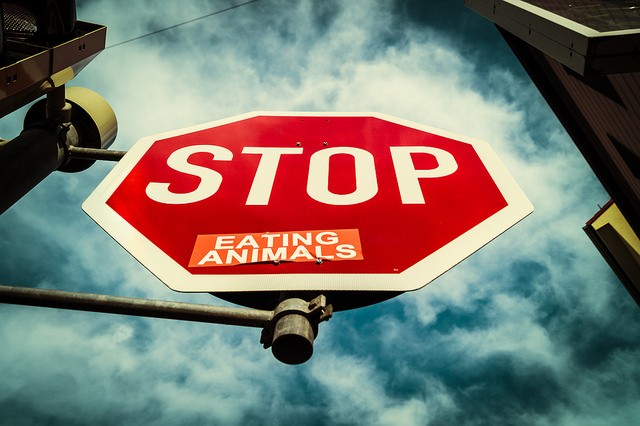Often people hesitate to go vegan because they are afraid to miss on something nobody can live without: protein. They are used to dinner tables that show a piece of meat and some vegetables. In fact, they are not sure about how to substitute protein the best way possible. However, if they knew about the wide variety of possibilities of plant-based protein, they would definitely have no hard time to skip meat and never look back again. So, here are 25 of probably the best alternatives to replace protein of meat by plant-based protein. Of course, this list is not final but should give anyone a good idea that they are fantastic options to go for.
“Protein is important to our health, our workouts and recovery, and our brain function; without it, we wouldn’t function at our best and our bodies wouldn’t be able to support us long-term. However, the problem with the view of protein in our country is where we’re getting the majority of our protein from: animals. Regardless of different opinions out there about including meat as a part of our regular diets, we can’t ignore the fact that meat consumption is causing our major environmental, health, and humanitarian problems. When you put all the pieces together, it is stime we start looking for a real sustainable alternative. Say hello to plants!
The Myth About Protein in a Plant-Based Diet
There used to be a myth that we needed to consume different types of foods to form “complete proteins” in the body. While this shouldn’t necessarily be ignored completely, it’s also not as important as we once thought. There are plenty of complete sources of plant-based protein that we can eat. Our bodies can also make complete proteins when we eat avariety of higher protein foods, even if those foods aren’t necessarily eaten together (such as rice and beans, a classic example of protein pairings). One struggle, however, is that many people aren’t sure how to replace the meat on their plate with a plant-based protein they’ll love and enjoy as much as meat. So, the simple thing is to quit focusing on just what our plates look like at dinner.
How to Rethink Protein Once and For All
Get rid of the picture of a dinner dish in your mind that shows a piece of meat, veggies, and a whole grain. While there’s nothing particularly wrong with eating protein at a meal, it’s also not mandatory for getting what you need. You can incorporate protein all throughout the day on a plant-based diet, especially in snacks, where it’s most often overlooked, without really needing a massive source at every meal. You can also eat foods that contain smaller amounts of protein at each meal that the body can use efficiently to form proteins on its own, even if these foods aren’t as high as the proteins in meat. Remember, the body can only use so much protein at one time anyway. What it can’t digest the rest of during a meal can go to waste and even be harmful to the body. A little here and there throughout the day (especially focusing on protein at breakfast to regulate blood sugar) is ultimately best.
Try these 25 plant-based proteins and see just how satisfying they really can be!
1. Lentils

Lentils are a protein favorite of many, especially those on vegetarian and vegan diets looking to pump up the protein fast. Lentils add 9 grams of protein to your meal per half cup, along with nearly 15 grams of fiber! See our lentil recipes here for tasty ways to use these little meaty legumes!
2. Tofu

What used to be seen as a boring vegan protein source has now been transformed intoeverything from breakfast to entrees, and yes, even desserts too. This protein source’s main attractive nature is that it can be flavored however you want and adds a rich, creamy texture or chewy texture to your food depending on if you buy firm or soft tofu. See our tasty tofu recipes to add a whopping 10 grams of protein (check labels) per cup of chopped tofu.
3. Black Beans

Black beans are one of the richest sources of antioxidants and one of the healthiest beans of all beans and legumes. Their dark color indicates their strong antioxidant content and they also have less starch than some other beans. One favorite way to enjoy them is to make black bean burritos, but that’s not the only way to use them. Try these delicious black bean recipesto add 8 grams of protein per 1/2 cup of these beans to your plate.
4. Quinoa

With 8 grams per cup, this gluten-free seed-like grain is a fantastic source of protein, magnesium, antioxidants, and fiber. You can cook it, bake it, and even stir into stir-fry dishes and more. Check out our quinoa recipes here for all types of ways to use this healthy pseudo-grain!
5. Amaranth

Amaranth is similar to quinoa and teff in its nutritional content, though much tinier in size. Thisancient pseudo-grain (also a seed) adds 7 grams of protein to your meals in just one cup of cooked amaranth. It’s also a fantastic source of iron, B vitamins, and magnesium. Try it in these yummy burgers that pair amaranth with lentil and all types of different spices.”
Read the full article here: onegreenplanet.org!
Recommended articles:
32 highest vegan protein sources
Nutritional Value of Salads for Vegans








Holly Besecker Strine
Thank you!
Donna Ponce Lucero
Since being on a mostly vegetarian diet, I’m going to start tracking what we eat and how much protein we get.
We eat a lot of the foods on this list.
Bethan Davies
Thank Steph, as of tomorrow I’m trying it for a month to see how I get on
Avery Griffin 🙂
Amie Johnson Druehl maybe this will have a few ideas to help
Diana Haggart
Ali Shearman here you go lol
Hinga Loretz
Thank you Aunt. Need me lots of protein.
Cori Schini Roe